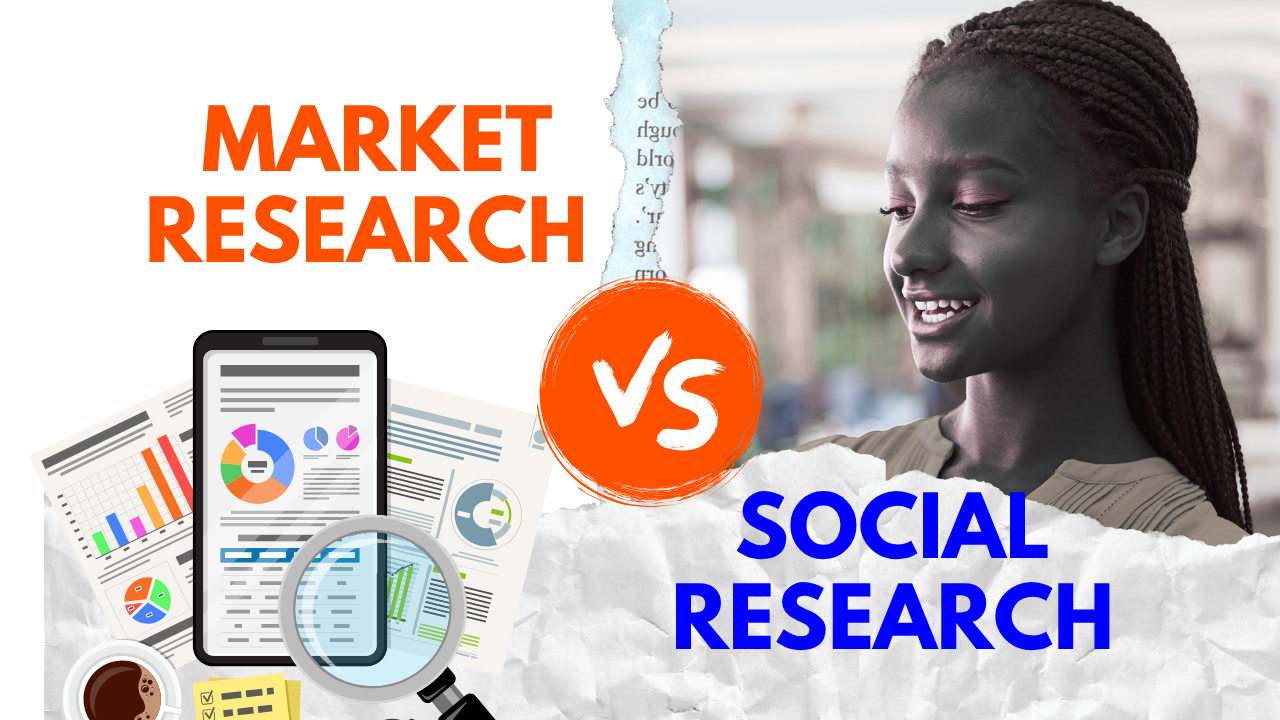Market Research vs. Social Research: What’s the Difference and Why It Matters

When organizations talk about understanding people’s behavior, opinions, or experiences, they often refer to either market research or social research. While both disciplines involve collecting and analyzing data about people, their goals, methods, and outcomes are often quite different. If you’re a business leader, NGO program manager, policymaker, or academic, knowing how to distinguish between these two types of research is essential in choosing the right approach for your project.
What is Market Research?
Market research is primarily commercial in nature. It focuses on understanding consumer behavior to help businesses make informed decisions about products, services, branding, and market positioning. For example, a telecom company may commission market research to determine why customers are switching to a competitor, or a fast-moving consumer goods (FMCG) company may explore the packaging preferences of its target market.
Market research typically answers questions such as:
What are our customers’ needs and preferences?
How is our brand perceived compared to competitors?
What price point is acceptable for a new product?
Which advertising messages resonate best with our target audience?
It often involves methods like surveys, product testing, focus groups, and brand perception studies, and is designed to yield insights that will drive profit, customer satisfaction, or business growth.
Learn more about common market research methodologies from ESOMAR.
What is Social Research?
In contrast, social research is usually carried out to inform policy, development programs, advocacy, or academic inquiry. Its aim is to understand social phenomena, behaviors, and attitudes in a non-commercial setting. Governments, NGOs, and international organizations often use social research to shape interventions, evaluate impact, or assess community needs.
Examples of social research questions include:
How do gender norms influence access to education in rural Kenya?
What are the barriers to water, sanitation, and hygiene (WASH) in informal settlements?
How effective was a cash transfer program in reducing food insecurity?
Methods in social research range from qualitative interviews and ethnography to large-scale surveys and impact evaluations. While some tools overlap with market research (such as FGDs or IDIs), the intent is often human development or social change, rather than business success.
Explore key social research frameworks at UNRISD.
Key Differences at a Glance
| Feature | Market Research | Social Research |
|---|---|---|
| Objective | Drive business decisions and profitability | Inform policy, improve social outcomes |
| Typical Clients | Corporations, startups, brands | NGOs, government agencies, development partners |
| Data Users | Marketing, product, sales teams | Program managers, policymakers, researchers |
| Subjects | Consumers, buyers, users | Citizens, beneficiaries, marginalized groups |
| Common Methods | Surveys, product testing, A/B testing | FGDs, case studies, community mapping |
| Outcomes | Business strategies, product development | Program design, social policy |
Do the Two Ever Overlap?
Yes—and increasingly so. The lines between market and social research are blurring, especially in areas like social enterprise, impact investing, or corporate social responsibility (CSR). For instance, a bank launching a financial literacy app might use market research to design the product and social research to measure its impact in underserved communities.
Similarly, organizations such as Acumen and B Lab often fund research that blends both commercial and social perspectives—aiming for solutions that are financially sustainable and socially impactful.
Which One Is Right for You?
To decide between the two, ask yourself:
Are you trying to sell a product or service? → Go with market research.
Are you trying to change behavior, assess impact, or inform policy? → Choose social research.
Sometimes, the right approach might involve both. For example, a social enterprise selling reusable menstrual pads might use market research to understand price sensitivity, while simultaneously using social research to explore cultural taboos around menstruation.
Let’s Talk About Your Research Needs
Whether you’re exploring new markets or evaluating a development intervention, choosing the right type of research ensures you ask the right questions, use the right tools, and get actionable insights. At Research8020 , we specialize in both market and social research across Africa, combining global best practices with deep local understanding.
👉 Need help designing your next research project?
Get in touch with our team today for a free consultation or explore our recent case studies to see how we’ve supported clients across sectors.
